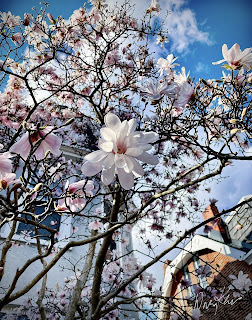বসন্তের জন্য অপেক্ষা

প্রিয় ঋতু কি কেউ জিজ্ঞেস করলে বিভ্রান্ত হয়ে পড়বো। কোনটা প্রিয় ঋতু? সবগুলোই যে প্রিয়! আমার বর্তমান ঠিকানা যুক্তরাষ্ট্রের দ্বিতীয় ক্ষুদ্রতম অঙ্গরাজ্য ডেলওয়্যার।এই ডেলওয়্যারে প্রতিটা মৌসুম ভিন্নতা নিয়ে আসে। যেহেতু এখানে প্রতিটা ঋতুর একটা স্বতন্ত্র অস্তিত্ব আছে তাই তাদের প্রতি আমার পৃথক পৃথক ভালোবাসা জন্মে গেছে। প্রতিটা ঋতুই নিয়ে আসে অনন্য আমেজ, প্রকৃতি সাজে অনুপম সাজে। সেই সাজ যেন অন্য ঋতুগুলোর চেয়ে একেবারে ভিন্ন। এই যেমন এখন গুটিগুটি পায়ে এসেছে ঋতুরানী বসন্ত: আকাশে-বাতাসে ঝঙ্কৃত হচ্ছে তার আগমনী সুর, আমি সেই সুর শুনতে পাই। সবগুলো ঋতু প্রিয় হলেও নিজেকে শীতকালের বড় ভক্ত বলে দাবী করতে পারিনা। গ্রীষ্মপ্রধান দেশে যার জন্ম এবং বেড়ে ওঠা, তার পক্ষে ঠান্ডা আবহাওয়াতে মানিয়ে নেওয়া কার্যত কষ্টকর, বিশেষত সেই শীতকাল যদি চার-পাঁচ মাস স্থায়ী হয়। তাই শীতকাল বিদায় নিয়ে যখন বসন্তকাল আবির্ভূত হয় তখন এক একদিন জানলা দিয়ে বাইরে তাকিয়ে ভাবি, "এত্ত সুন্দর একটা দিন দেখার সৌভাগ্য হলো আমার!" শোবার ঘরের জানলা দিয়ে প্রভাতের বাসন্তী রঙের রোদ এসে ভাসিয়ে দেয় কাঠের মেঝে, সাদা আরামকে


